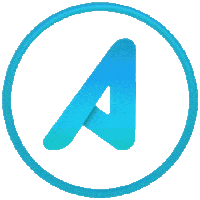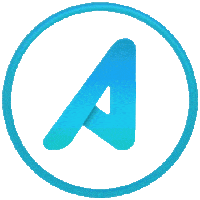99.4% of 509 higher education institutions in the US say that artificial intelligence (AI) in education and learning will be instrumental to their institution’s competitiveness in the next three years.
In a world where technology is advancing at an unprecedented pace, it’s no surprise that AI is making its way into the classroom. As educators and researchers continue to explore the possibilities of AI in education, they are discovering its potential to revolutionize the way we learn. The AI education market is predicted to cross 20 billion USD by 2027.
In this article, we will explore some real-life examples of how AI is being used to improve education and how it can help students succeed.
1. 80% accurate recommendations to help students, when compared to expert human advice
A Stanford researcher developed an AI program to provide students with assistance when they get stuck in self-paced digital learning. The study tested a machine-learning program that would predict when a student was likely to get stuck and start “wheel-spinning”, at which point it would recommend a relevant solution. The program was trained by analyzing performance data from 1,170 Ugandan school children who had used tablets to learn English reading skills through videos and mini-games. The program was able to predict whether a child would fall into “wheel-spinning”, even before they had begun a new lesson.
In four out of the six cases, the model and the human expert came up with the same recommendations. The study concludes that AI can be used to identify student problems and make it easier for a limited number of human teachers to help a large number of students.
2. With 91% accuracy, AI-enhanced Chatbots provided personalized help and guidance to students
The University of Murcia in Spain recently implemented an AI-powered chatbot to assist students with inquiries about the campus and academic programs. To the surprise of administrators, the chatbot demonstrated a high level of proficiency, answering over 38,708 questions correctly more than 91% of the time. Keep in mind, this was before ChatGPT, and we can only expect these metrics to improve even further.
This implementation not only provided students with prompt responses outside of standard office hours but also resulted in an increase in student motivation. Additionally, the implementation of the chatbot did not require any changes to the existing staff structure.
3. 62% Increase in Test Scores Through Adaptive Learning
A study by Knewton, an adaptive learning company, found that students using their AI-powered adaptive learning program improved their test scores by 62% compared to students who did not use the program. The program provided personalized feedback and instruction to students, tailoring the learning experience to their individual needs and abilities.
4. AI Improved Students’ Grades by 30% While Reducing Their Anxiety by 20%
Pai et al. (2020) proposed an intelligent tutoring system to help fifth-grade students learn the mathematical unit of multiplication and division. They found that the intelligent tutoring system (ITS) improved students’ mathematics learning performance and increased their learning motivation.
5. Over 47% of Learning Management Tools Will Be Powered by AI in the Following Three Years
It is projected that nearly 47% of learning management tools will incorporate AI by 2024. This will enable teachers to personalize education for each student by utilizing the core curriculum and supplementing it with various materials, facilitated by the assistance of AI.
The market for these AI-enhanced e-Learning tools is anticipated to reach over $6 billion by 2024. Again this survey was conducted prior to the proliferation of AI tools like ChatGPT over the last few months, therefore we think it’s likely that this statistic could be even larger than originally predicted.
6. With a 97% Success Rate, AI Teaching Assistant Answers 10,000 Messages a Semester
At the Georgia Institute of Technology, an AI-powered chatbot named Jill Watson, developed by IBM’s Watson, was employed as a teaching assistant for a course with 300 students.
With a 97% accuracy rate, Jill Watson was able to respond to around 10,000 student inquiries each semester with remarkable human-like efficiency.
7. AI Predicts a Student’s Final Grade with 80% Accuracy, to Save 34,712 Students From Failing
Ivy Tech Community College in Indiana conducted a pilot study using data from 10,000 course sections. By identifying 16,000 students at risk of failing within the first two weeks of the semester, the college was able to address non-academic obstacles that contributed to their struggles.
By the end of the semester, 3,000 students were saved from failing – 98% of the contacted students obtained a C grade or better. Through Project Student Success, the college has been able to assist 34,712 students and counting.
8. 95% of graduates with hearing impairments are successfully employed, thanks to AI-assisted education
Text-to-speech and speech-to-text technology are being used to make learning materials more accessible to students with visual and hearing impairments. National Technical Institute for the Deaf (NTID) at RIT serves more than 1,100 deaf and hard-of-hearing students from around the United States and the world, allowing students to access and engage with learning materials in a way that is comfortable and convenient for them.
9. Over 800,000 students across Latin America, Korea, and Japan have improved their English by practicing with AI voice technology
Edwin is an AI-powered service for learning English as a foreign language. To provide affordable, personalized, 1:1 learning, it combines adaptive learning and Natural Language Understanding technologies with pedagogical content.
Using adaptive learning technology, Edwin’s team built English test preparation courses that were taught by a Facebook chatbot and a human teacher in tandem. Over 800,000 students have improved their English with Edwin.
10. Educators Spend 70% Less Time Grading Assignments By Using an AI-Powered Grading Tool
Gradescope is a platform designed to streamline the grading process, delivering benefits to both educators and students.
The AI tech was shown to reduce the amount of time teachers spent on grading by 70%. The platform operates by allowing students to upload their assignments, which are then sorted and grouped by Gradescope. Educators have access to per-question and per-rubric statistics, providing valuable insights into student performance.
AI in Education: A Gateway to a Better Future of Learning
The above are just a small handful of examples to demonstrate the power of AI for education. Given the recent explosion of AI tools into the market, this is just the beginning of what is certain to be a transformative time for education and learning. At Axon Park, we’ve been exploring the use of AI in education since 2019, and look forward to sharing our latest work with you all over the coming days.
If you come across any great statistics that have recently been released, and you think they should be added to this list, please don’t hesitate to reach out.




